All eyes will be on the crown jewels at the coronation of King Charles III. The royal crowns that will be worn by King Charles and Queen Consort Camilla will feature some of the most valuable diamonds and other precious and semi-precious stones in the world.
In this article, we will detail the fascinating history and unique jewels on the two royal crowns King Charles will wear, as well as the stunning crown Queen Consort Camilla will wear, which will include the addition of three iconic diamonds from Queen Elizabeth’s private collection. But first, we’ll cover the basics of what the world can expect to see at the coronation.
The Coronation of King Charles III
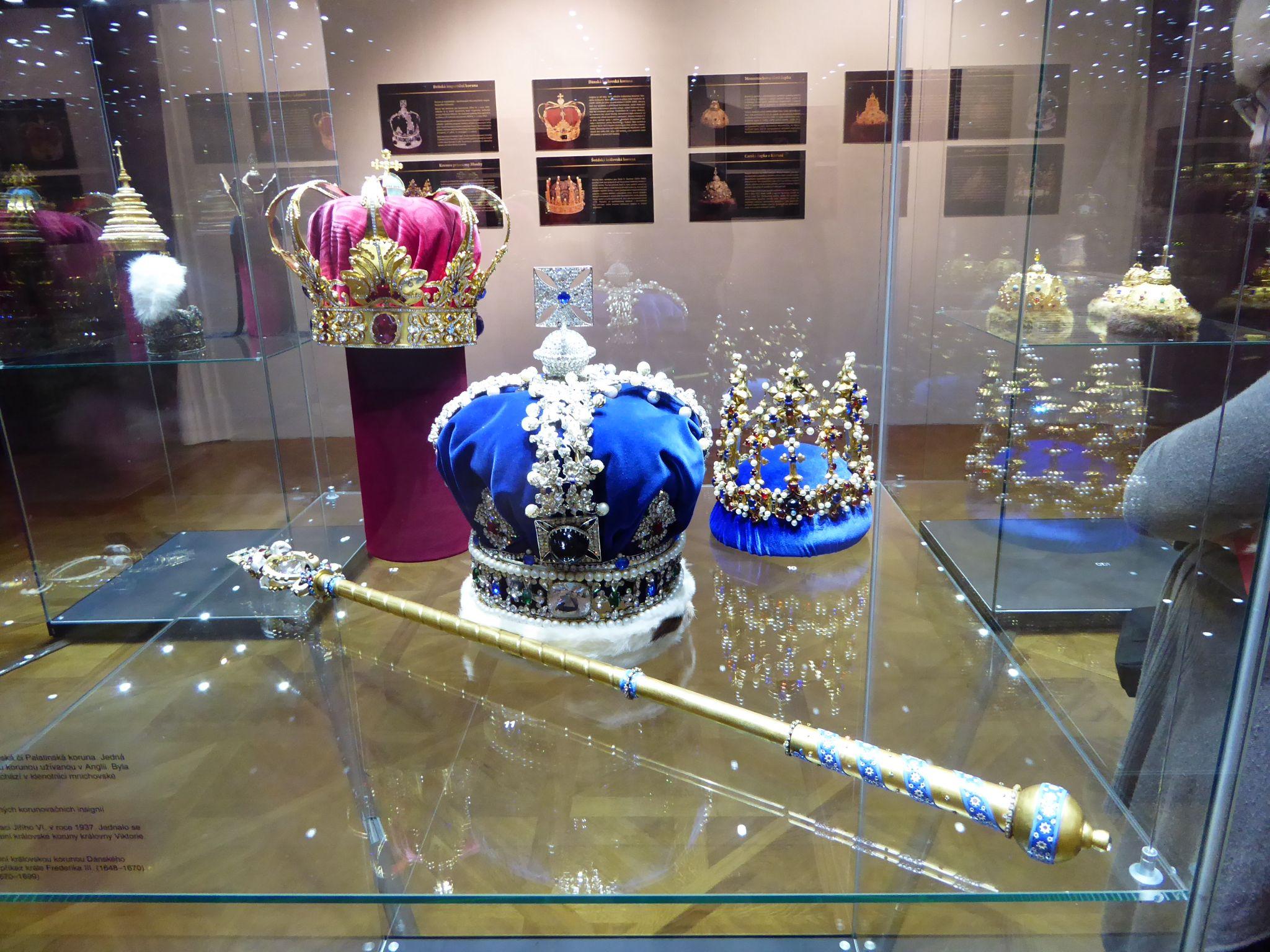
When will Charles be crowned King?
The official coronation of King Charles III is set to take place on Saturday May 6, 2023 at Westminster Abbey.
What crown will Charles wear for the coronation?
It is expected Charles will be crowned with the St Edward’s Crown as well as wear the lighter Imperial State Crown, which is recognized most readily as Queen Elizabeth’s crown, as she wore it throughout her reign as the crown of England and it was also the crown featured on her coffin.
How much is Queen Elizabeth’s crown worth?
The Imperial State Crown, which will now be King Charles’ crown, is estimated to be worth $3.4 to $5.7 billion.
What crown will Camilla wear for the coronation?
Queen Consort Camilla is expected to wear the Crown of Queen Mary.
What is the Queen’s crown made of?
The Crown of Queen Mary is being modified by the Crown Jeweller to add diamonds from Queen Elizabeth’s private collection, including the stunning Cullinan III, IV, and V diamonds.
The St Edward’s Crown
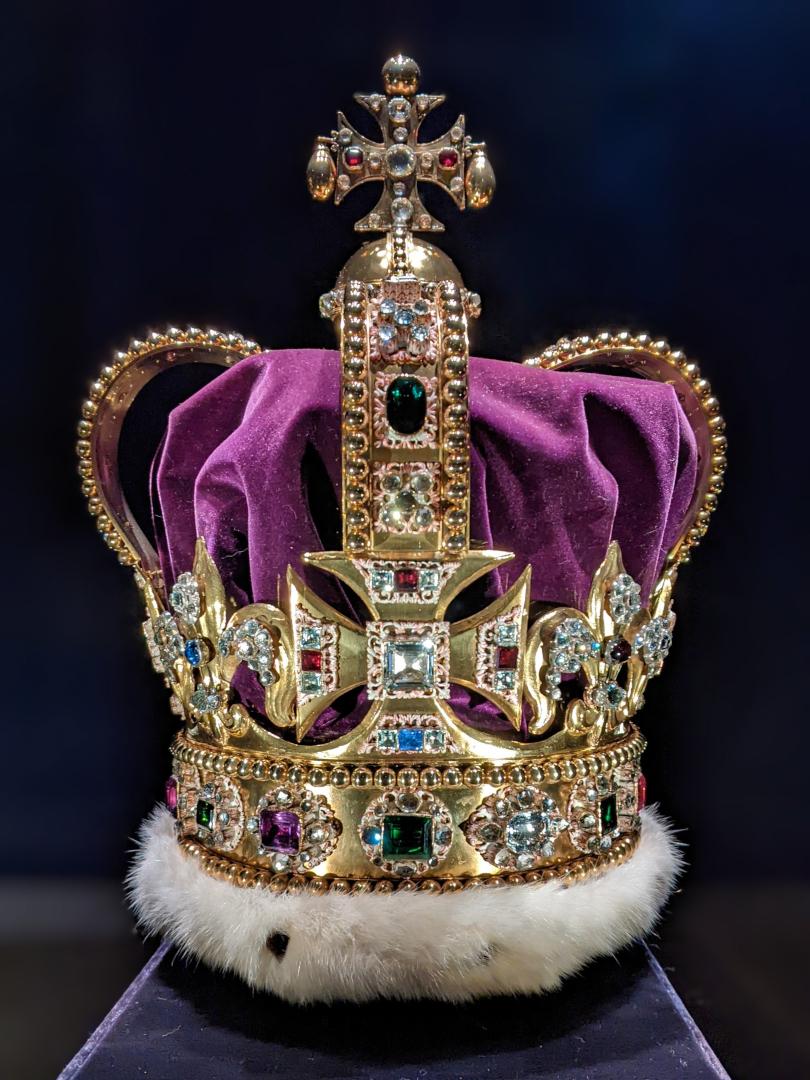
The St Edward’s Crown is one of the oldest and most important crowns in the collection of British Crown Jewels. It is named after Edward the Confessor, who was a medieval king of England and a saint in the Catholic Church.
The original crown is believed to have been made in the 11th century, possibly for the coronation of William the Conqueror in 1066. Over the centuries, the crown was altered and modified several times, with precious stones and other adornments added and removed.
The current version of the St Edward’s Crown was made in 1661 for the coronation of King Charles II. It is made of solid gold and weighs nearly 5 pounds, making it one of the heaviest crowns in the collection. Though it is the official coronation crown, some monarchs have opted not to wear it specifically due to its weight. This includes Queen Victoria and King Edward VII.
Queen Elizabeth II, however, did wear the St Edward’s Crown at her coronation in 1953, and her son, King Charles III will continue the tradition at his coronation.
It is estimated that the St Edward’s Crown is worth $57 million.1
The Jewels of St Edward’s Crown
The St Edward’s Crown is a work of art in 22-carat gold. It stands 12 inches tall and weighs a hefty 4.9 pounds. The crown features a breathtaking 444 precious and semi-precious stones. This includes2:
- 345 rose-cut aquamarines
- 37 white topazes
- 27 tourmalines
- 12 rubies
- 7 amethysts
- 6 sapphires
- 2 jargoons
- 1 garnet
- 1 spinel
- 1 carbuncle
The Imperial State Crown
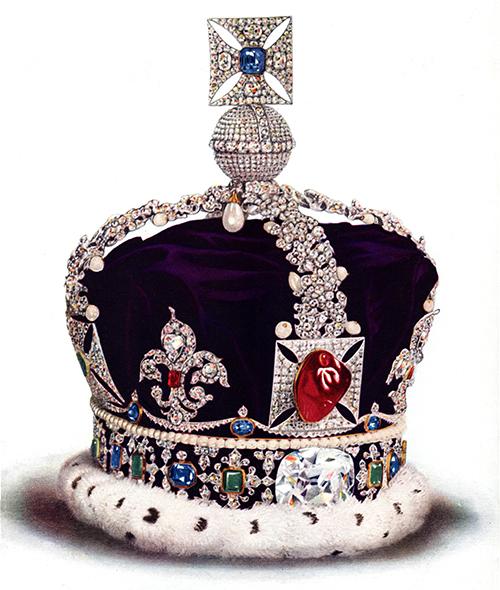
The Imperial State Crown is the most recent of the crowns in the collection of British Crown Jewels, having been made in 1937 for the coronation of King George VI. The crown was designed by the famous crown jeweler Garrard & Co. and features a stunning array of precious stones, including the Cullinan II diamond and the Black Prince’s Ruby.
The design of the Imperial State Crown was based on an earlier crown made for Queen Victoria, which was itself a replacement for the medieval St Edward’s Crown. The Imperial State Crown was made to be lighter and more comfortable to wear than its predecessors, while still retaining the regal splendor of earlier crowns.
Since its creation, the Imperial State Crown has been worn by several British monarchs, including Queen Elizabeth II during her coronation in 1953 and for subsequent State Openings of Parliament. This was also the crown featured on her coffin. King Charles is expected to wear this crown along with the St Edward’s Crown on the day of his coronation.
It is estimated that the Imperial State Crown is worth $3.4 to $5.7 billion.3
The Jewels of Imperial State Crown
The Imperial State Crown features a stunning array of precious stones, including:
The Cullinan II Diamond

The Cullinan II diamond, also known as the Second Star of Africa, is one of the most famous diamonds in the world and is set in the front of the Imperial State Crown.
Carats: The Cullinan II diamond weighs 317.4 carats, making it one of the largest diamonds in the world.
Cut: The diamond is cushion-shaped and has 66 facets, measuring approximately 39.75mm x 39.6mm x 25.9mm.
Color: The diamond is colorless and has a D color grading, which is the highest color grade for diamonds.
Clarity: The diamond has a clarity grade of VS1, which means that it has very few, if any, visible inclusions.
The diamond was cut from a larger stone known as the Cullinan Diamond, which was discovered in South Africa in 1905. The Cullinan Diamond was the largest diamond ever found, weighing a staggering 3,106 carats. It was presented to King Edward VII as a gift, and was later cut into several smaller stones.
The Cullinan II diamond was cut from the largest section of the Cullinan Diamond, and is considered one of the most valuable and impressive stones in the world.
The Black Prince’s Ruby
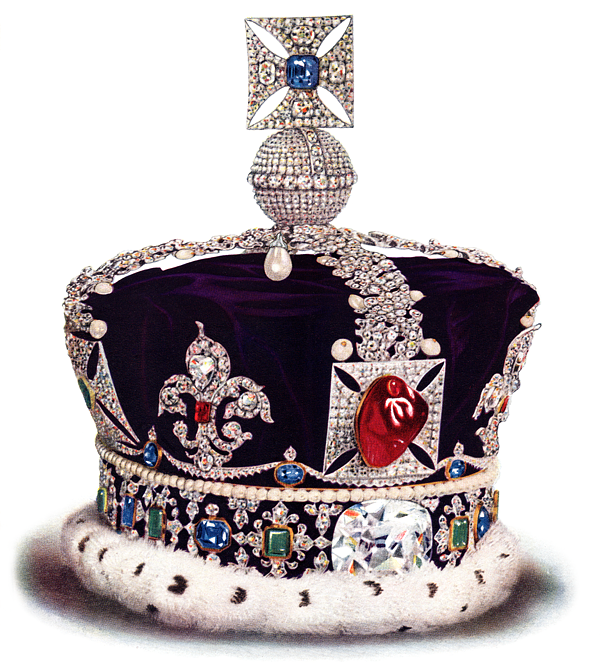
The Black Prince’s Ruby is a large, irregular cabochon-cut red spinel that is set in the center of the Imperial State Crown, just below the Cullinan II. Despite its name, it is not a ruby, but a spinel, which is a different type of gemstone. The spinel is an elongated oval shape and has a smooth, polished surface with no facets.
The stone has a long and fascinating history. It is believed to have been discovered in the mines of Badakhshan, which is now part of modern-day Tajikistan, in the 14th century. The gemstone was brought to Europe and eventually came into the possession of Edward, Prince of Wales, who was known as the Black Prince. It is said that the prince wore the stone on his helmet during battles, and that it brought him good luck.
After the Black Prince’s death, the stone passed into the possession of the English monarchy. It has been worn by several British monarchs, including King Henry V, King Henry VIII, and Queen Victoria. In the 19th century, it was set in the Imperial State Crown, where it remains today.
The Stuart Sapphire
The Stuart Sapphire is a large blue sapphire, weighing approximately 104 carats. It is considered to be one of the most valuable sapphires in the world due to its size, color, and historical significance.
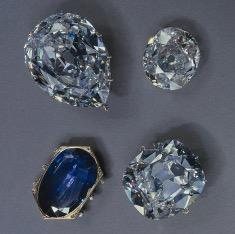
The sapphire is believed to have been discovered in the mines of Sri Lanka in the early 17th century. It was purchased by James I of England and Scotland, who had it set in the Imperial State Crown. The stone was later passed down to James II, who fled the country during the Glorious Revolution of 1688 and took the Stuart Sapphire with him. It remained in the possession of his descendants for many years, and was eventually sold to King George IV in the early 19th century.
George IV had the Stuart Sapphire set in the Order of the Garter, which is one of the highest honors that can be bestowed upon a British citizen. However, it was later removed from the order and reset in the Imperial State Crown. The sapphire is set in the back of the crown, just above the Maltese cross.
The St Edward’s Sapphire
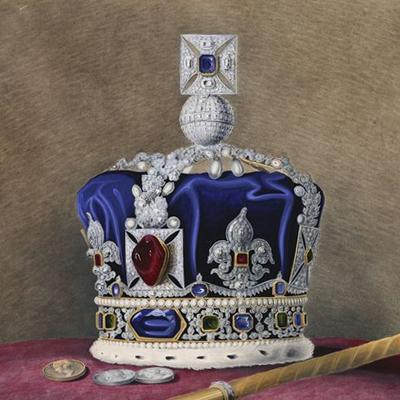
The St Edward’s Sapphire is a large blue sapphire that weighs approximately 35 carats and is set in the Maltese cross on top of the Imperial State Crown.
The history of the St Edward’s Sapphire is unclear, and its origin is unknown. It is believed to have been owned by Edward the Confessor, who was a medieval English king and a saint in the Catholic Church. The stone is said to have been one of his most treasured possessions, and was believed to have healing powers. After his death, the stone was passed down through several royal families and eventually came into the possession of the British monarchy.
In total, the Imperial State Crown features 2868 diamonds, 269 pearls, 17 sapphires, 11 emeralds, and 5 rubies.4
The Crown of Queen Mary
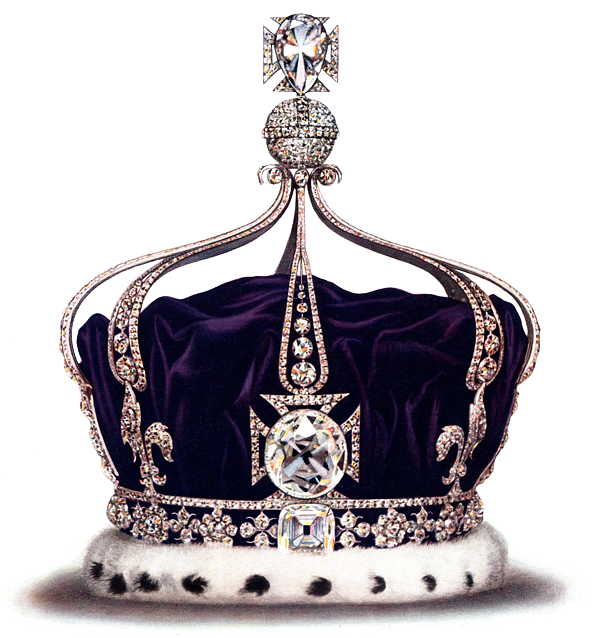
The Crown of Queen Mary is a beautiful and intricate piece of jewelry designed by the famous jewelry firm Garrard & Co. and was created specifically for the coronation of King George V and Queen Mary in 1911.
After the coronation, Queen Mary wore the crown on a number of occasions, including the opening of Parliament and the State Opening of the Royal Opera House. She also wore the crown to a number of royal weddings and other state occasions.
Following Queen Mary’s death in 1953, the crown was passed down to her daughter-in-law, Queen Elizabeth II. However, the crown had not been worn by Queen Elizabeth II, as she had preferred to use other crowns, such as the Imperial State Crown, for her official duties.
For the coronation of Queen Consort Camilla, a few modifications are being made to the Crown of Queen Mary. Most notably are the addition of the Cullinan III, IV, and V diamonds. These diamonds were given to Camilla by Queen Elizabeth from her private jewelry collection.5
The Jewels of the Crown of Queen Mary
For the coronation of Queen Consort Camilla, the following diamonds are being added by the Crown Jeweller to the Crown of Queen Mary:
The Cullinan III Diamond
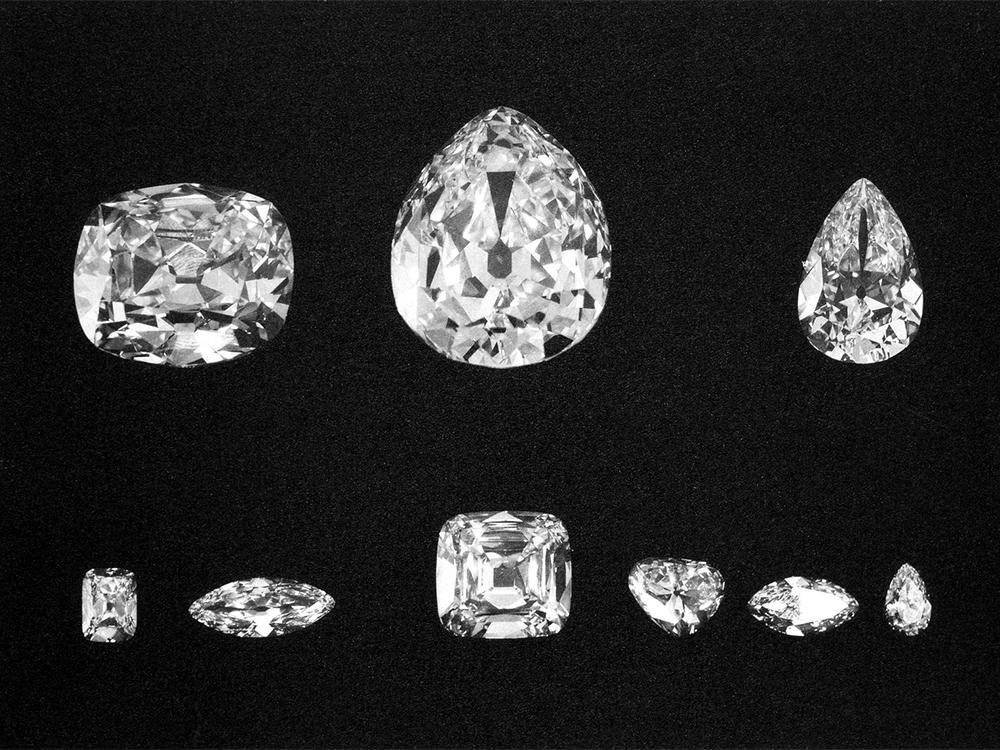
The Cullinan III diamond is a pear-shaped diamond and is one of the nine largest stones cut from the Cullinan Diamond.
Carats: The Cullinan III diamond weighs 94.4 carats, making it one of the largest diamonds in the world.
Cut: The diamond is pear-shaped, with 76 facets and measures approximately 28.2mm x 18.8mm x 10.7mm.
Color: The diamond is colorless and has a D color grading, which is the highest color grade for diamonds.
Clarity: The diamond has a clarity grade of VS2, which means that it has some visible inclusions, but they are not visible to the naked eye.
The Cullinan IV Diamond
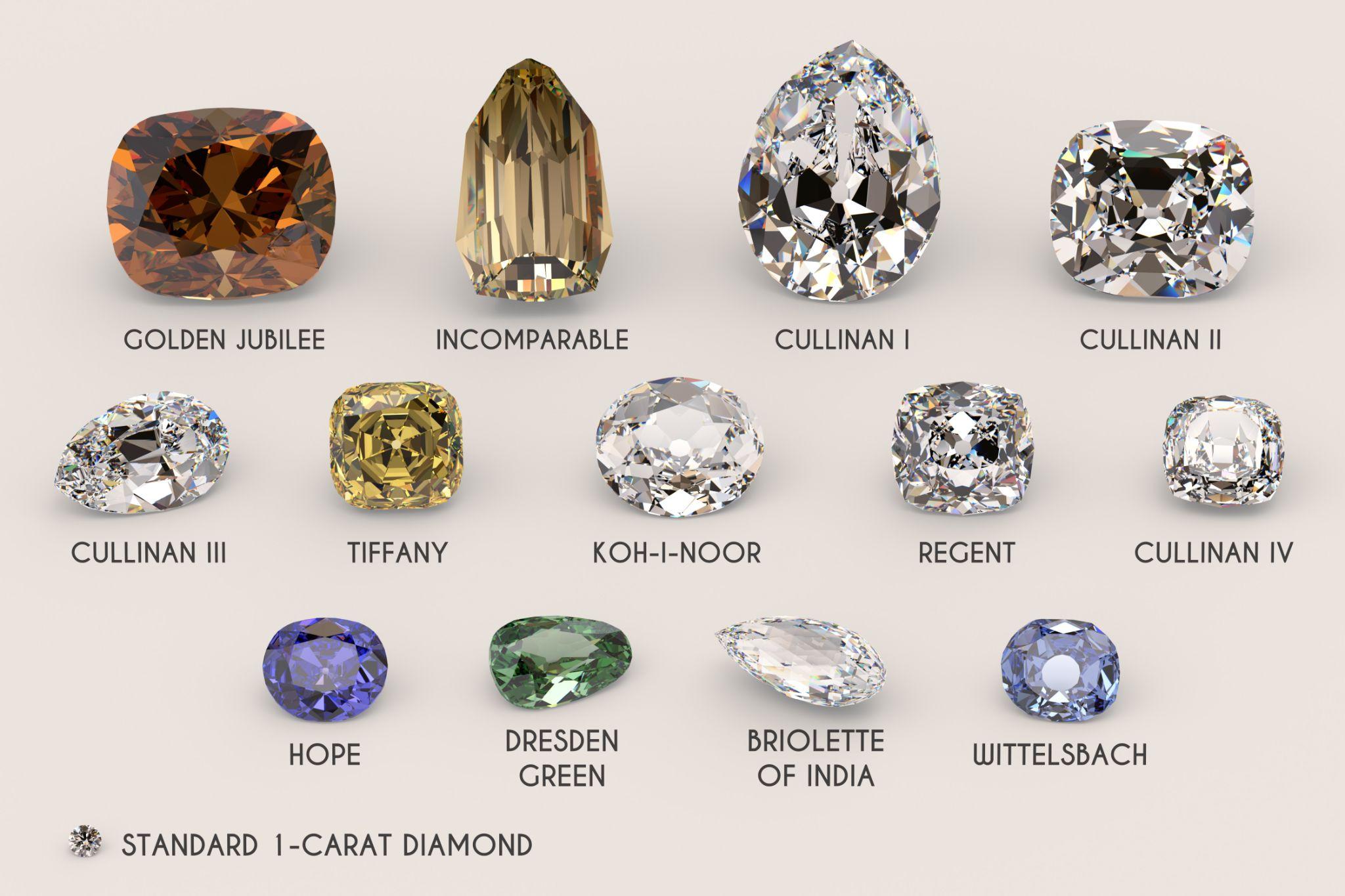
The Cullinan IV diamond is a square-shaped diamond and is one of the nine major stones cut from the Cullinan diamond.
Carats: The Cullinan IV diamond weighs 63.6 carats, making it a substantial diamond.
Cut: The diamond is square-shaped, also known as a princess cut, with 40 facets, measuring approximately 26mm x 25mm x 5.5mm.
Color: The diamond is colorless and has a D color grading, which is the highest color grade for diamonds.
Clarity: The diamond has a clarity grade of VS2, which means that it has some visible inclusions, but they are not visible to the naked eye.
The Cullinan V Diamond
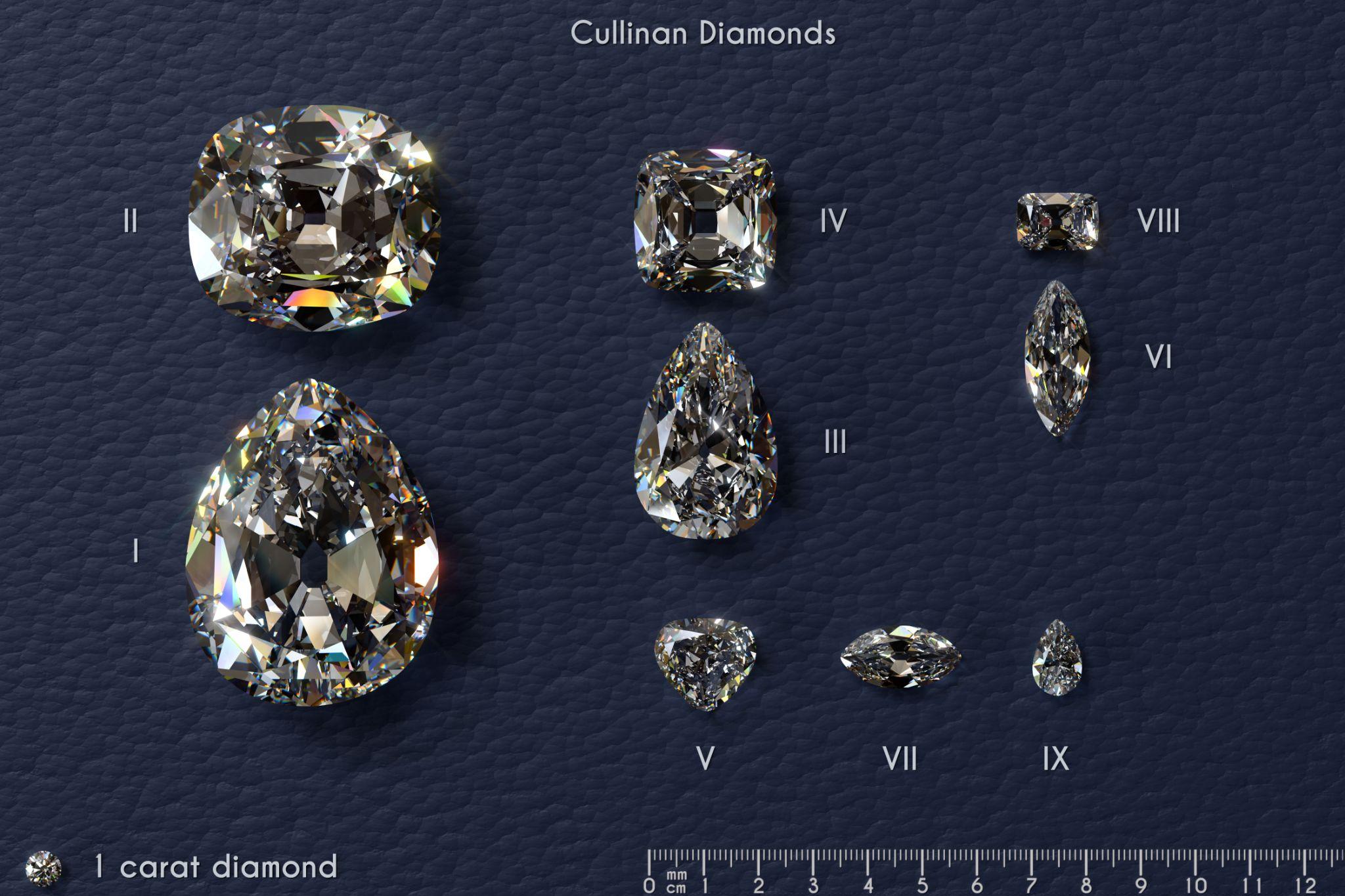
The Cullinan V diamond is a heart-shaped diamond and is one of the smaller stones cut from the Cullinan diamond.
Carats: The Cullinan V diamond weighs 18.8 carats, making it one of the smaller stones cut from the Cullinan diamond.
Cut: The diamond is heart-shaped, with 18 facets, measuring approximately 18mm x 18mm x 7mm.
Color: The diamond is colorless and has a D color grading, which is the highest color grade for diamonds.
Clarity: The diamond has a clarity grade of VS2, which means that it has some visible inclusions, but they are not visible to the naked eye.
Special Mention: The Crown of Queen Elizabeth The Queen Mother

It was speculated that Queen Consort Camilla might choose the Crown of Queen Elizabeth The Queen Mother. This crown was created for the coronation of her husband, King George VI, in 1937, and made by the famous London jeweler Garrard & Co.
It notably features the Koh-i-Noor diamond, which has continued to draw controversy on who is the rightful owner. This controversy is the reason it is believed it will not feature at the coronation.6
The Koh-i-Noor Diamond
The Koh-i-Noor is a magnificent diamond that has captivated people’s attention for centuries. Its size, shape, and cut, as well as its rich history, make it one of the most famous and valuable diamonds in the world.
Carats: The Koh-i-Noor weighs around 105 carats, making it one of the largest diamonds in the world.
Cut: The Koh-i-Noor has a unique oval shape with 33 facets on the front and 34 on the back. Its cut enhances its brilliance and fire, and gives it a symmetrical appearance.
Color: The diamond is mostly colorless, although it has a slight yellowish tint.
Clarity: The Koh-i-Noor is known for its high clarity, which means that it has few or no internal flaws.
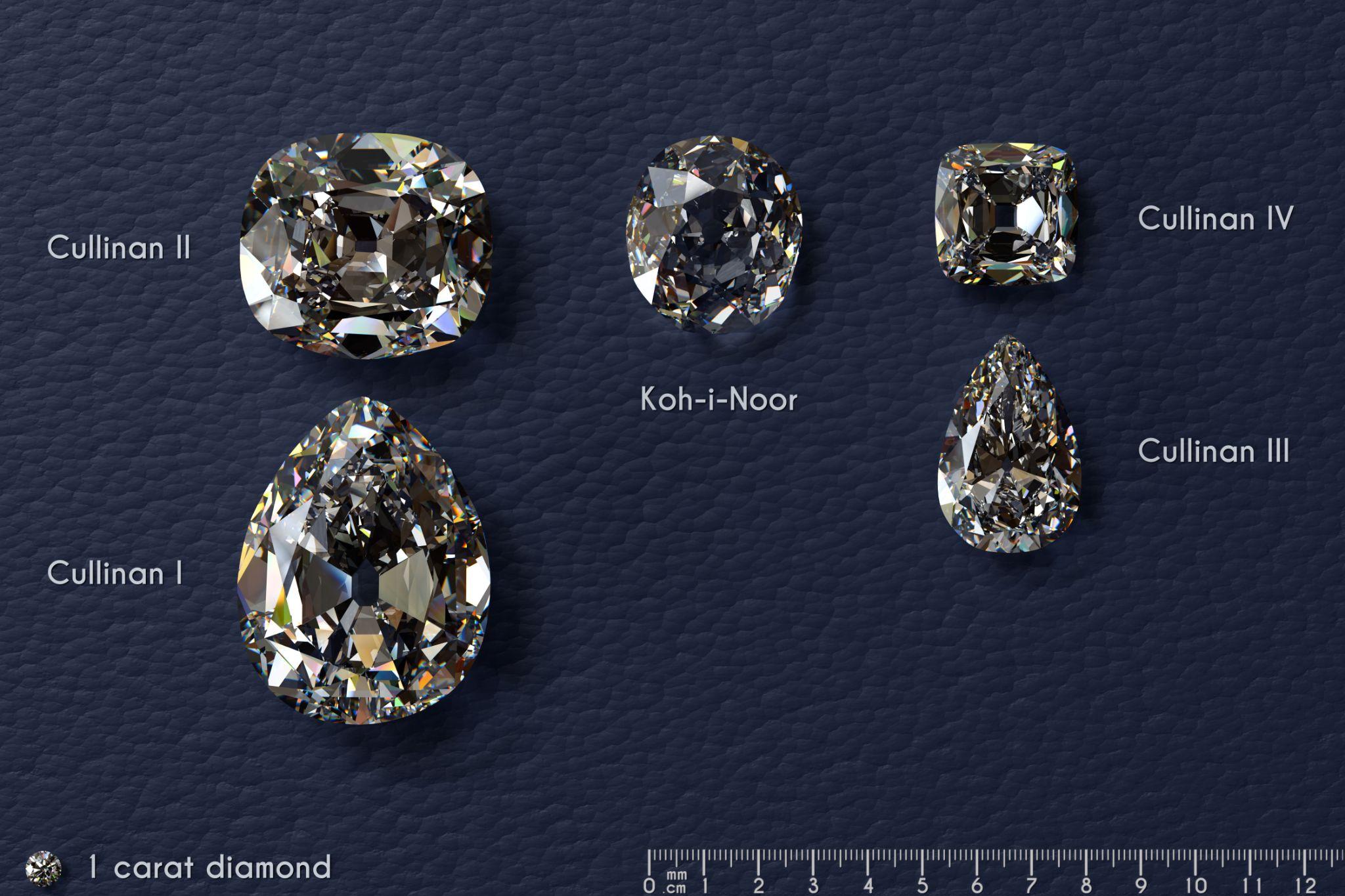
The diamond was first mentioned in historical records in the 1300s and was owned by several Indian rulers over the years. It was later acquired by the Mughal Empire and was worn by several Mughal emperors, including Shah Jahan, who built the Taj Mahal.
In the early 1800s, the diamond was acquired by the British East India Company during the Anglo-Sikh Wars and was later presented to Queen Victoria in 1850. The diamond was recut to improve its brilliance and was set into a brooch that was worn by the queen and later by other members of the royal family.
Over the years, several countries have claimed ownership of the Koh-i-Noor and have called for its return to its country of origin. India, in particular, has long claimed that the diamond was stolen from the country during the colonial era and has demanded its return.
However, the British government has maintained that the diamond was obtained through a legal treaty and that it is a part of the British Crown Jewels.
Sell Your Diamonds to Diamonds USA

If you have diamonds in your private collection that no longer bring a sparkle to your eye, consider selling them through a reputable online buyer like Diamonds USA. We are one of the most trusted names in the business and only work with GIA-certified appraisers. Request your complimentary, insured appraisal kit today.
Sources
- https://www.rd.com/article/how-much-british-crown-jewels-worth/
- https://en.wikipedia.org/wiki/St_Edward%27s_Crown
- https://www.rd.com/article/how-much-british-crown-jewels-worth/
- https://www.rct.uk/collection/31701/the-imperial-state-crown
- https://www.royal.uk/queen-consort-crown-coronation
- https://www.townandcountrymag.com/style/jewelry-and-watches/a42891792/queen-mary-camilla-coronation-crown/
Post Revisions:
There are no revisions for this post.
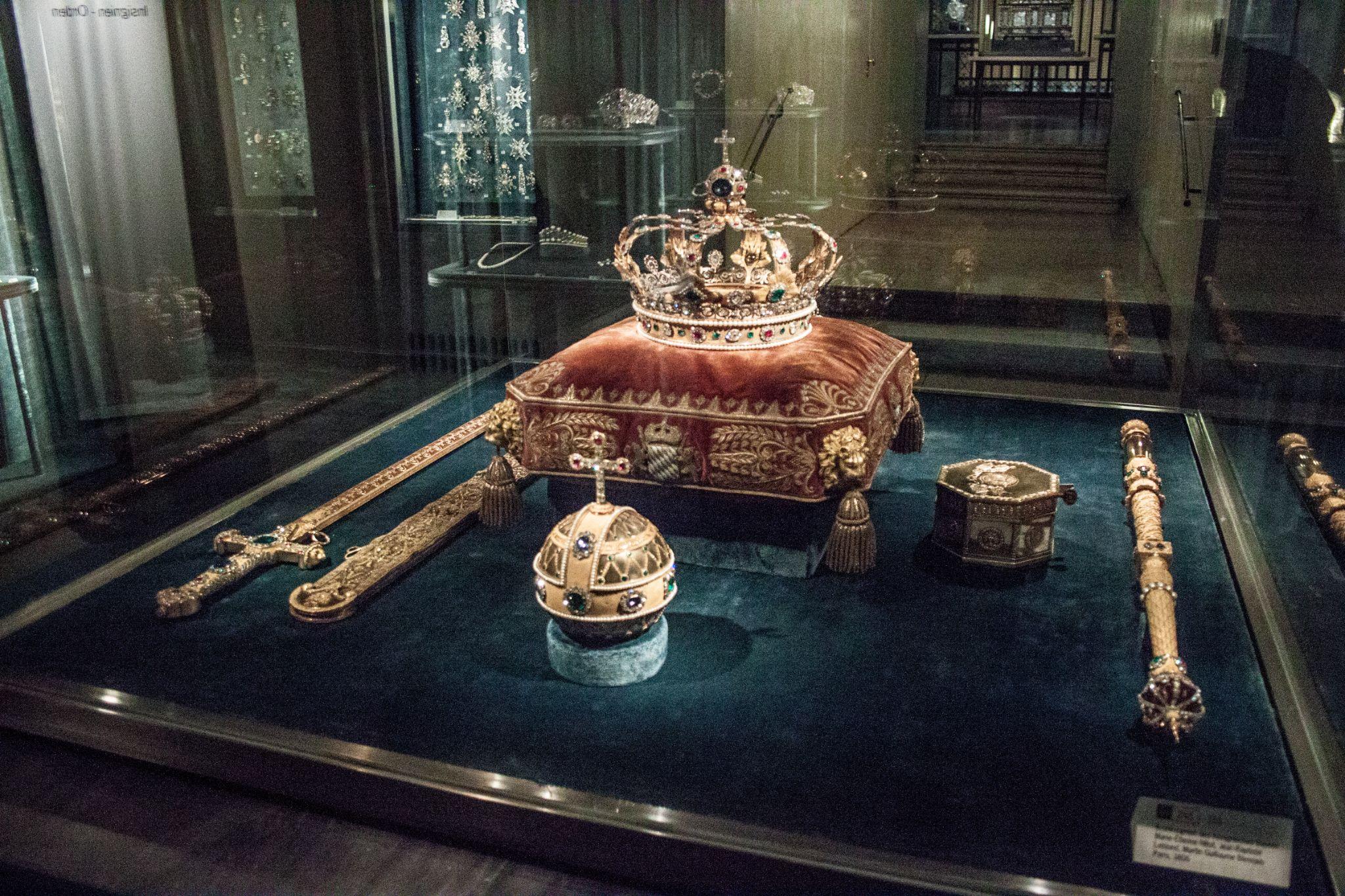
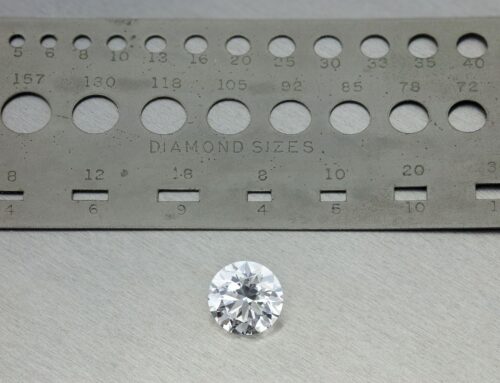
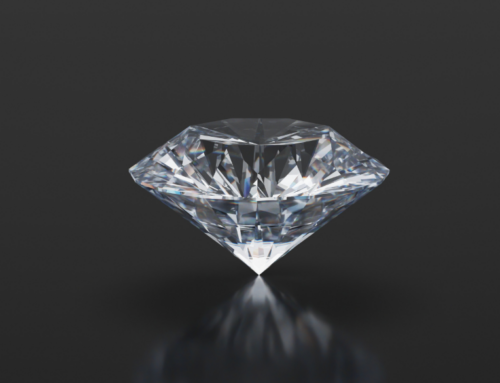
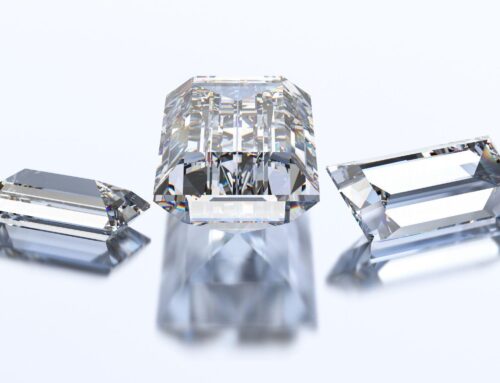
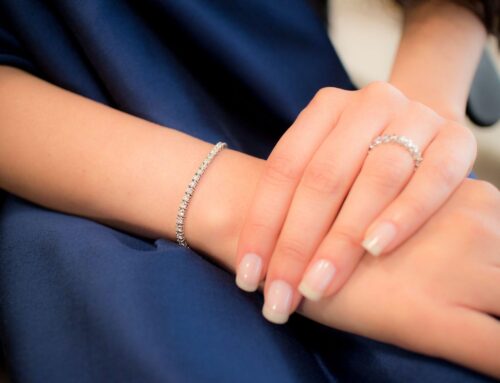

Leave A Comment